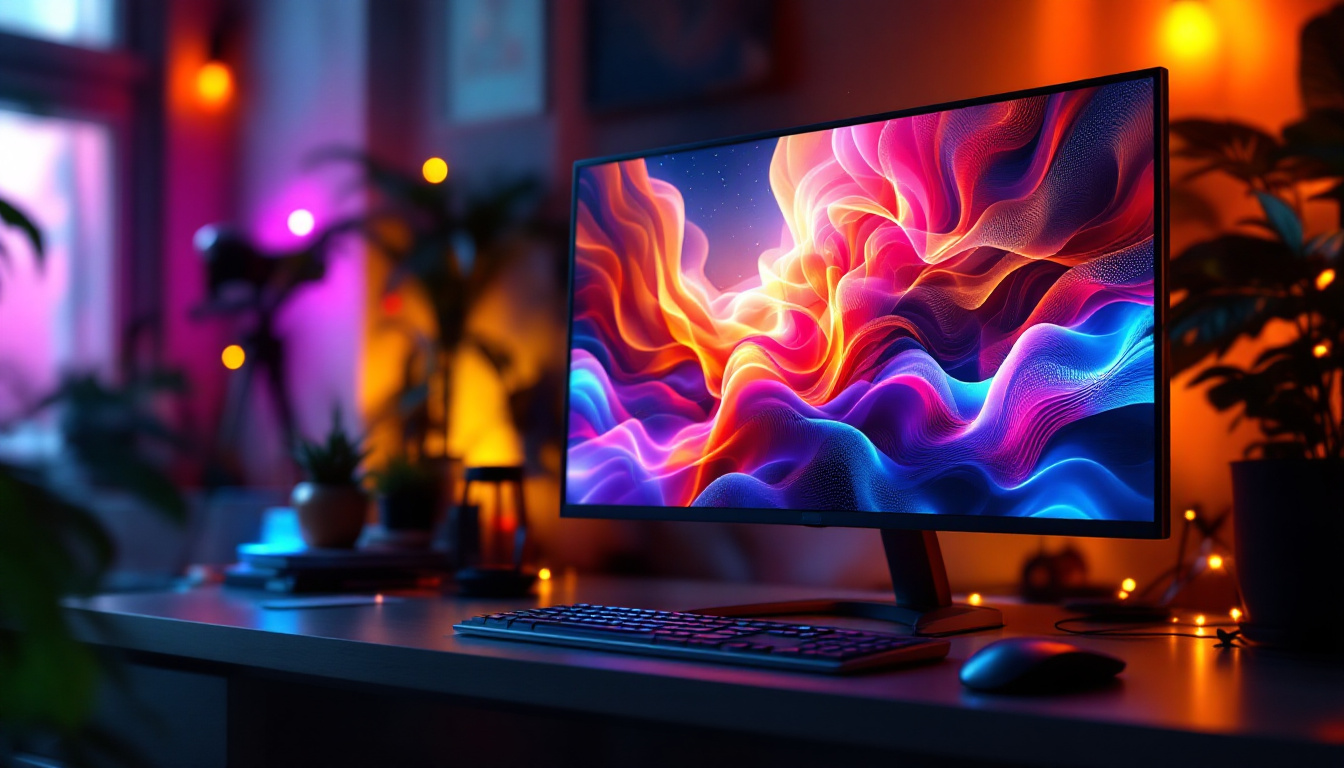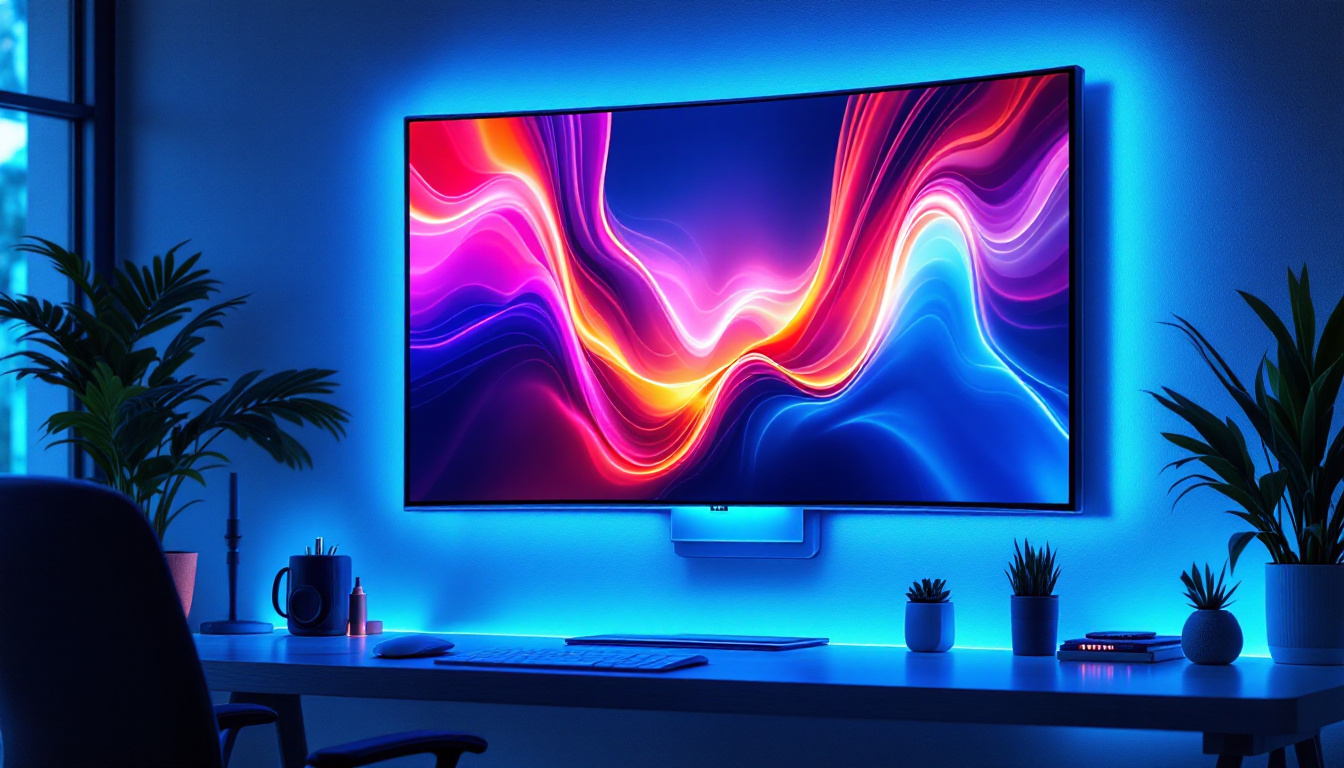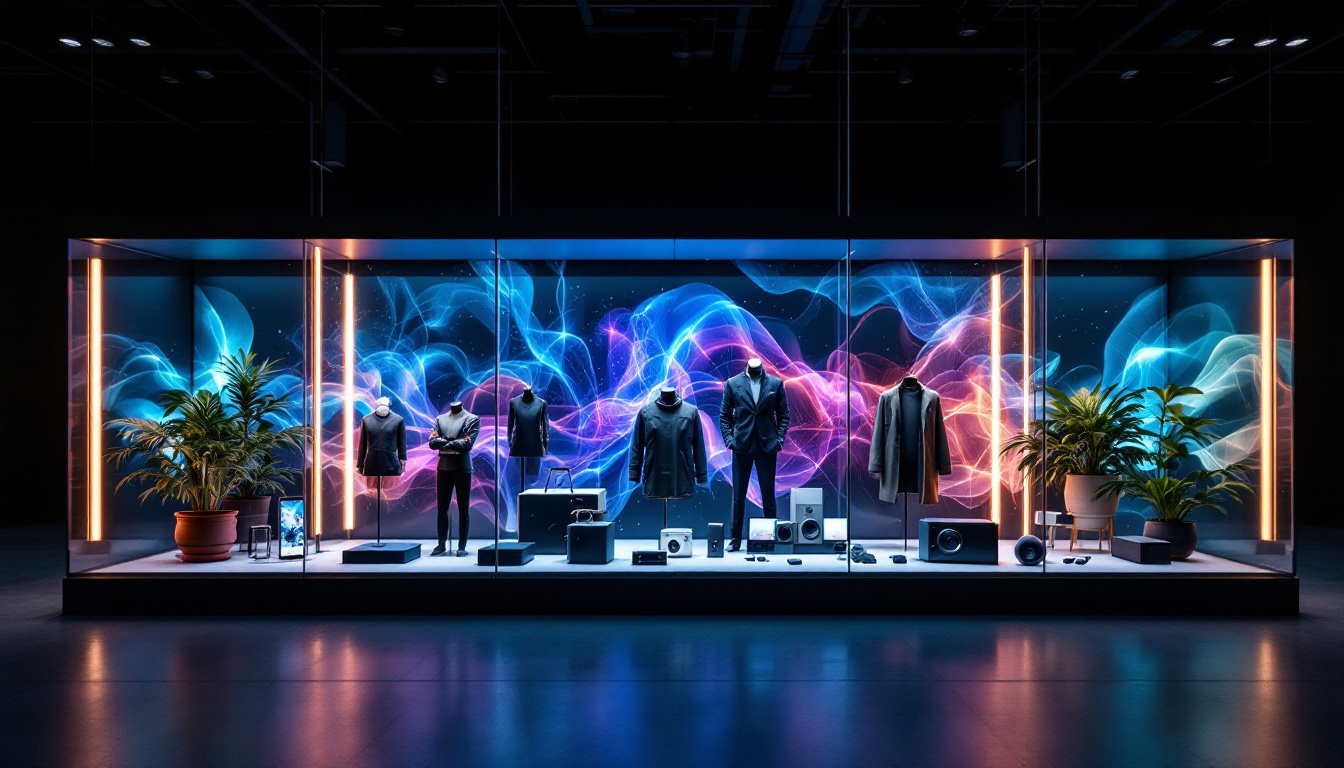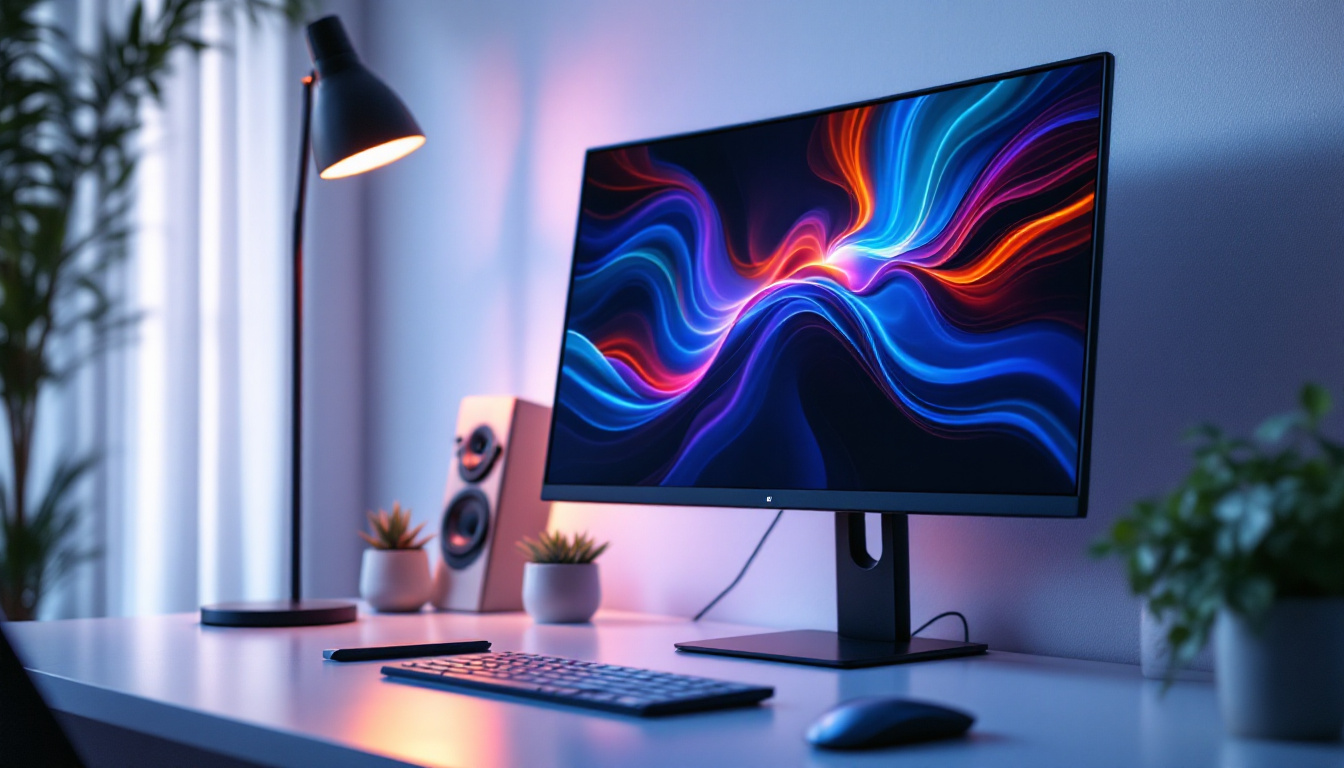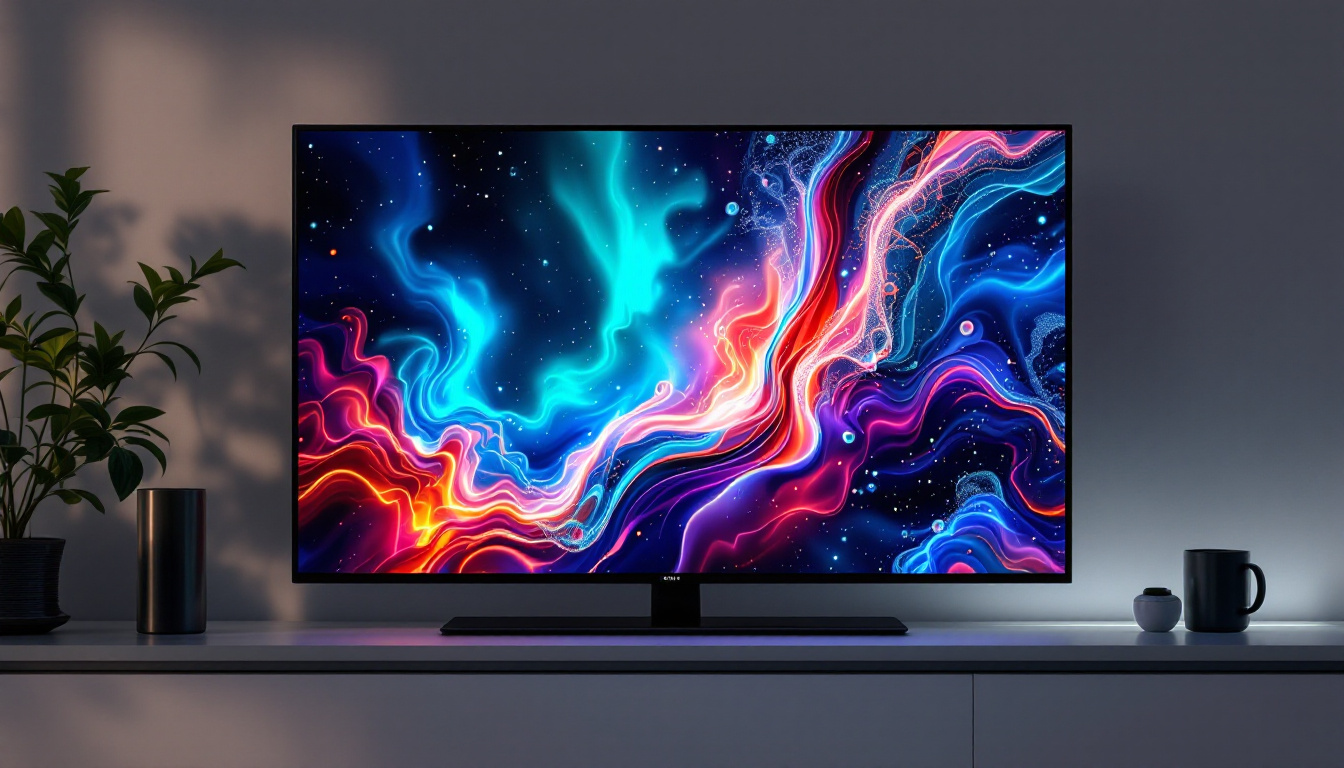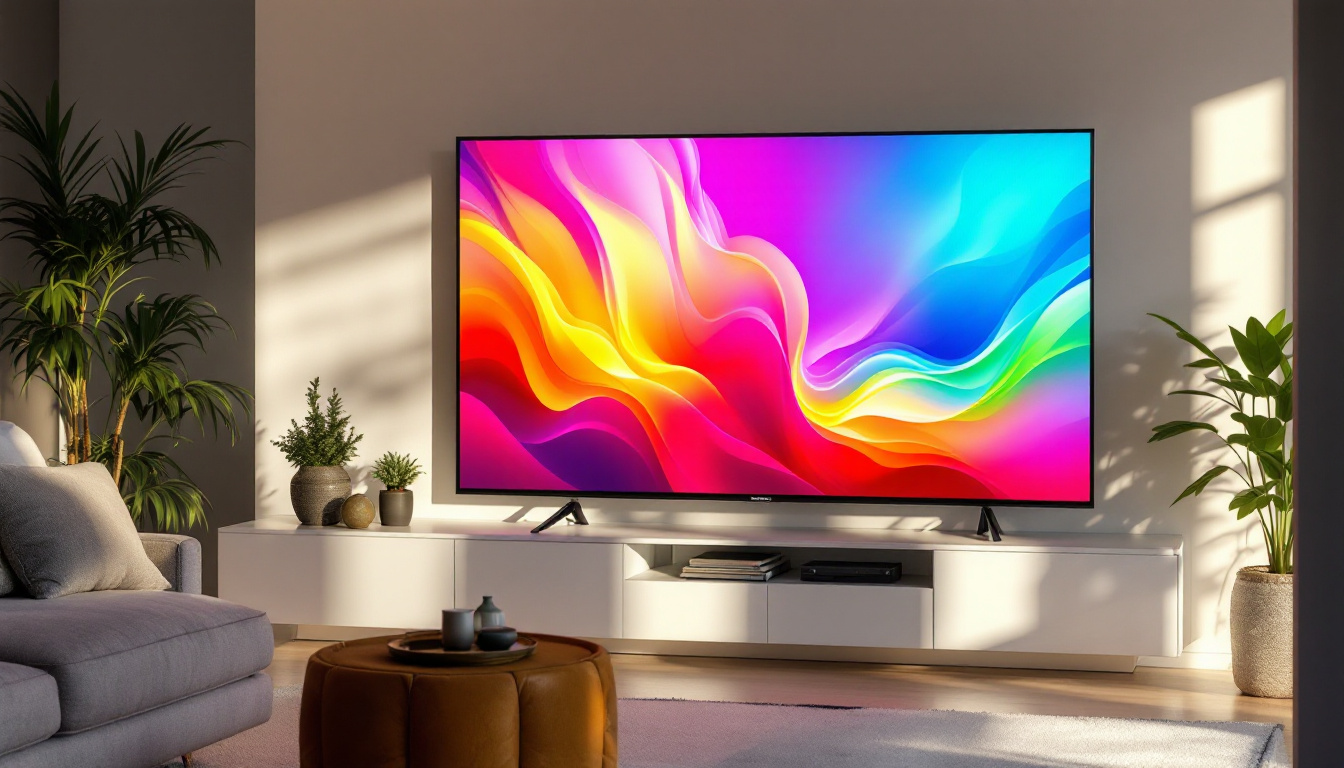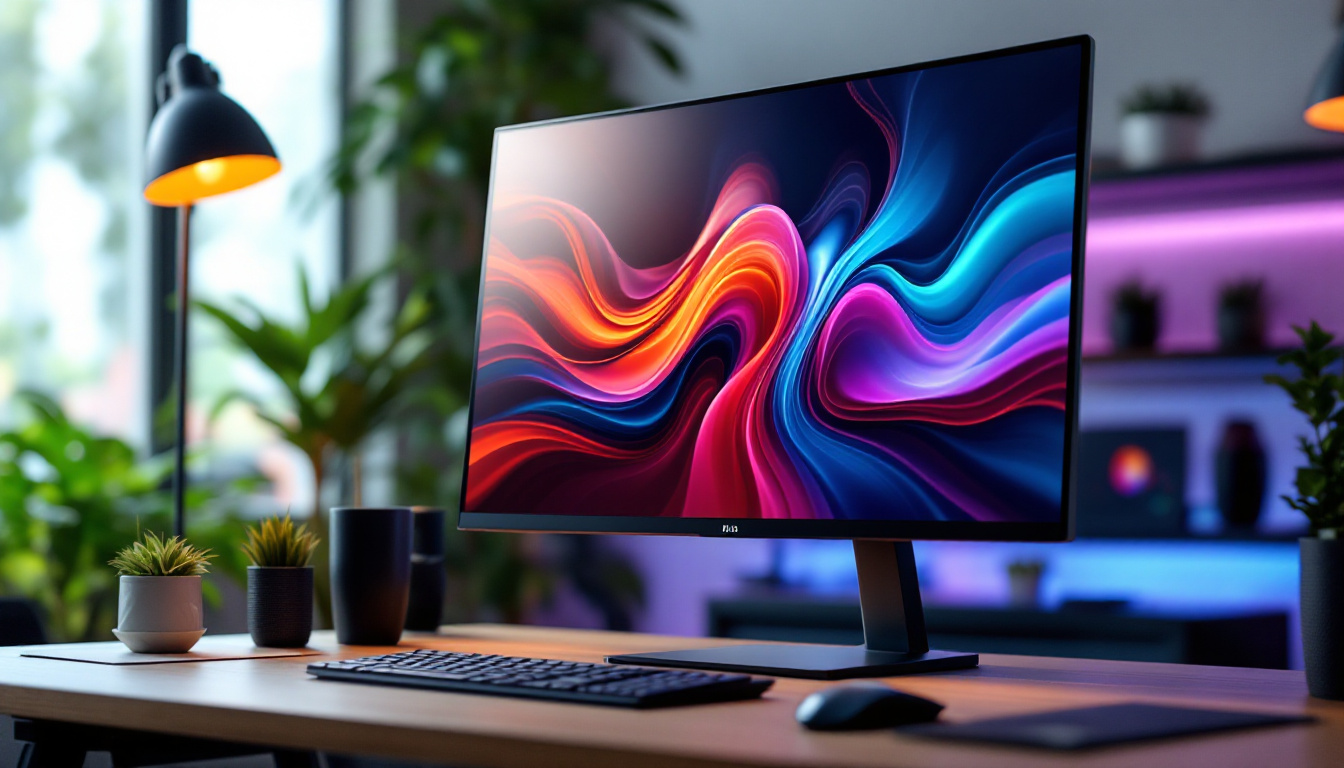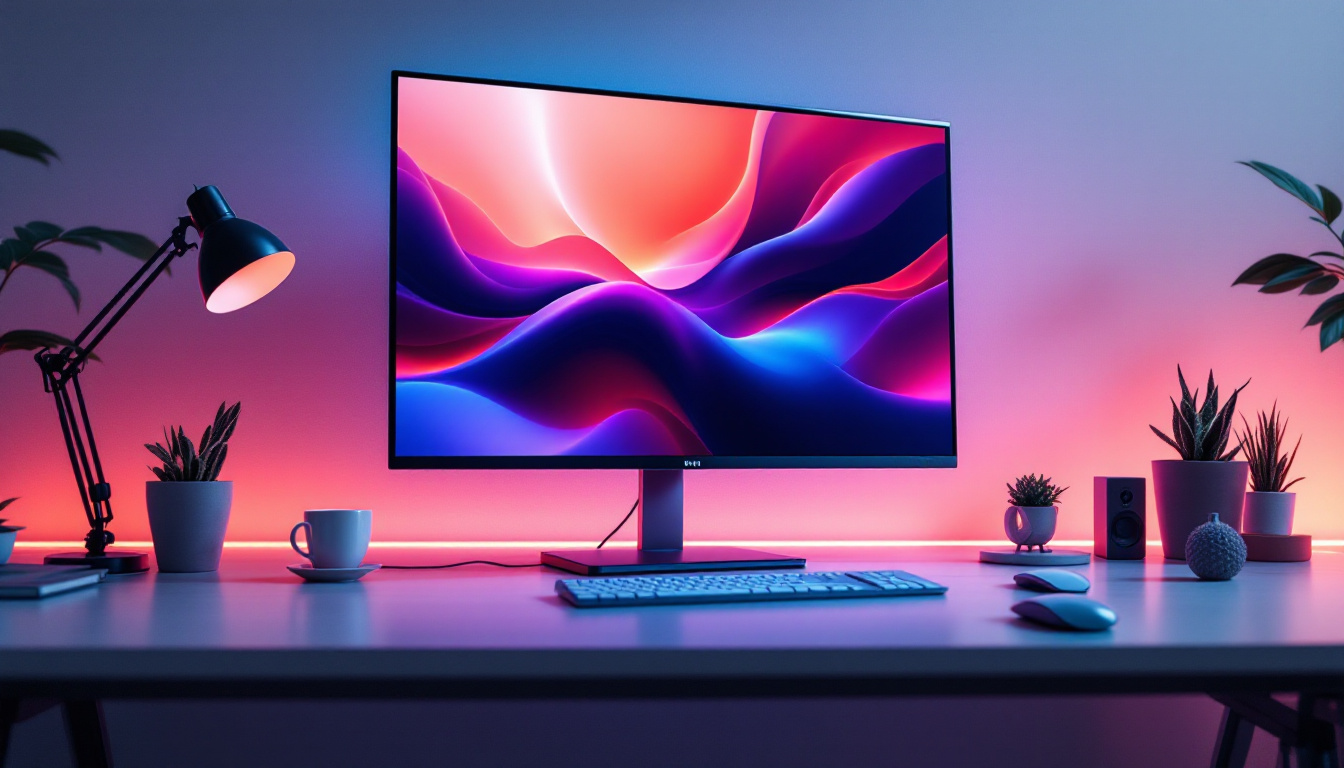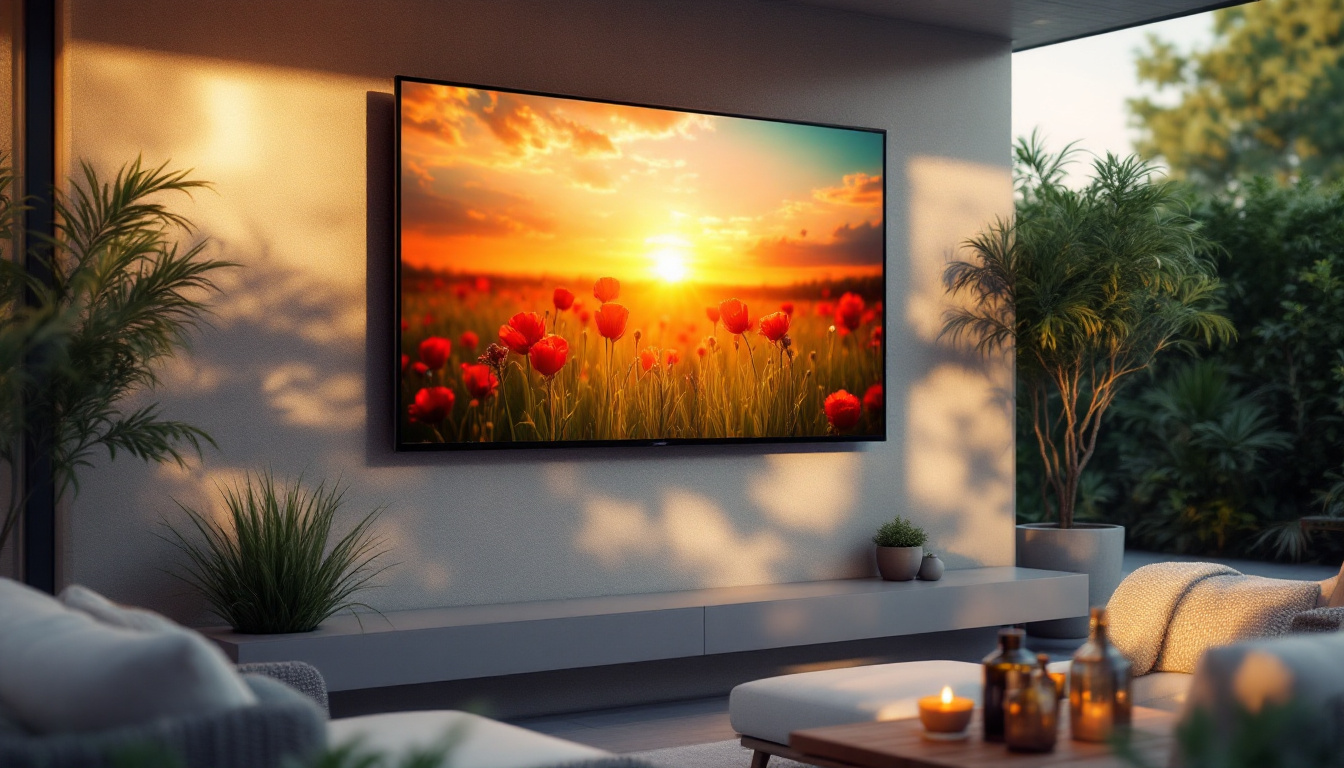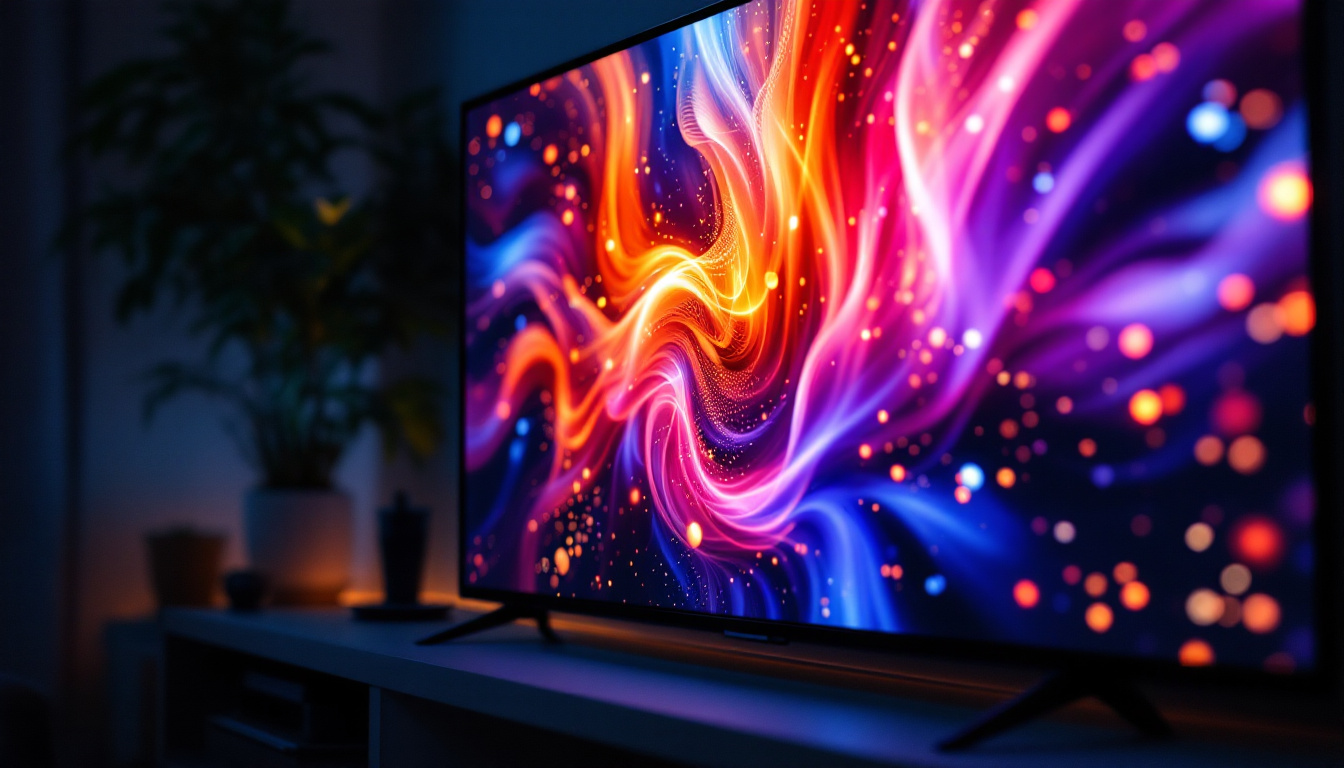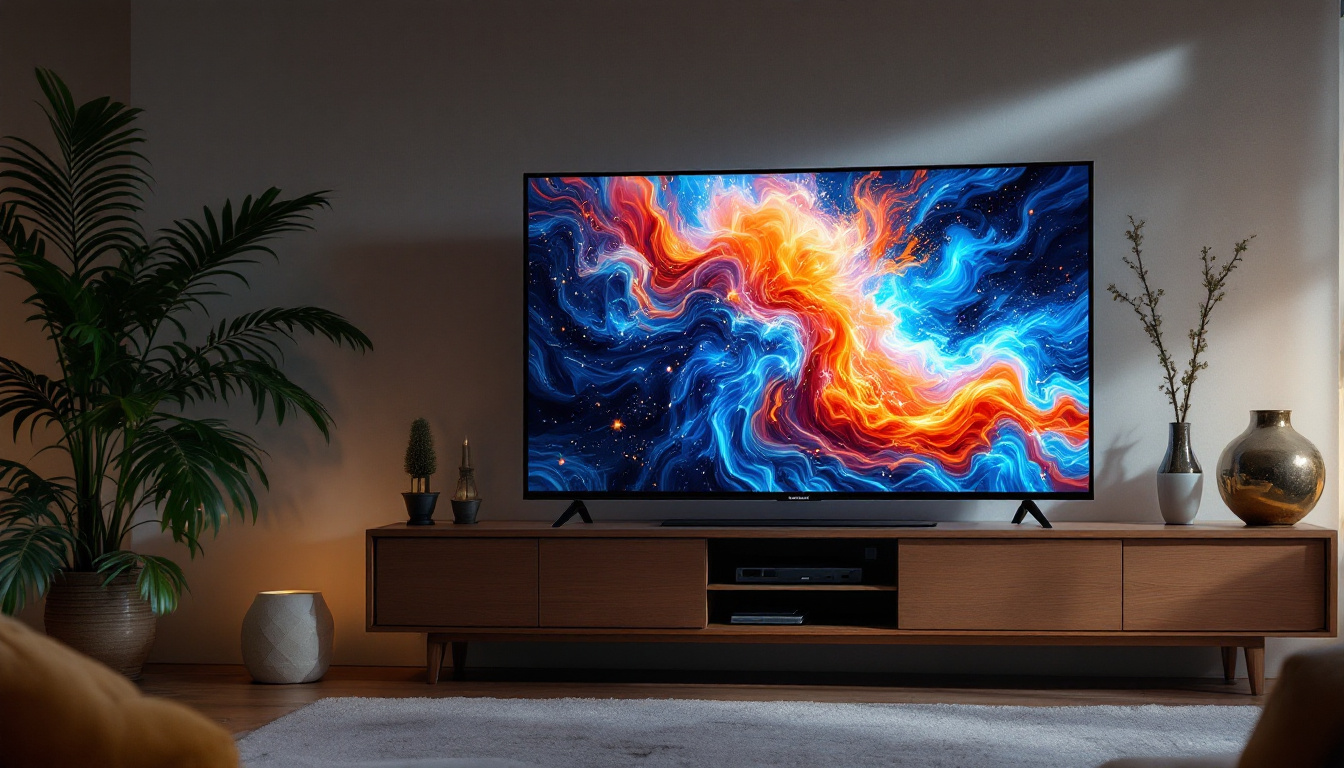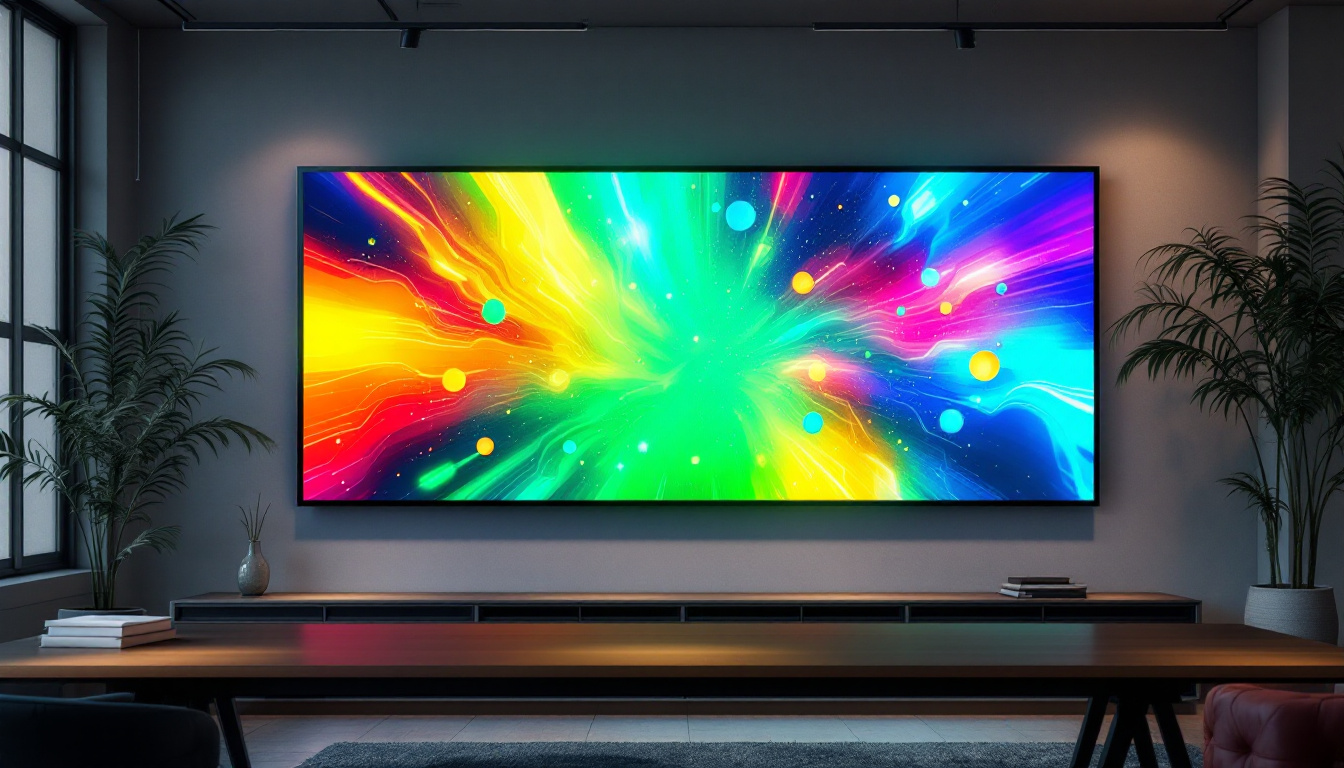In the ever-evolving world of technology, the slimline monitor has emerged as a popular choice for both personal and professional use. These sleek devices are not only aesthetically pleasing but also offer a range of features that enhance the user experience. This article delves into the intricacies of slimline monitors, with a particular focus on LED display technology, exploring how it works, its benefits, and what to consider when choosing one.
Understanding Slimline Monitors
Slimline monitors are designed to be lightweight and compact, making them ideal for environments where space is at a premium. Their thin profiles and modern designs allow them to blend seamlessly into various settings, from home offices to corporate environments. But what exactly sets these monitors apart from traditional displays?
Design and Aesthetics
The design of a slimline monitor is one of its most appealing features. Manufacturers have focused on creating displays that not only save space but also enhance the overall look of a workspace. With minimal bezels and a sleek finish, these monitors can elevate the visual appeal of any setup.
Moreover, many slimline monitors come with adjustable stands, allowing users to customize their viewing angles. This ergonomic consideration is essential for long hours of use, reducing strain on the neck and eyes. Some models even offer VESA mount compatibility, enabling users to mount their monitors on walls or adjustable arms for an even more streamlined appearance. This flexibility not only maximizes desk space but also contributes to a cleaner, more organized workspace.
Performance and Functionality
Beyond aesthetics, slimline monitors are engineered for performance. Many models incorporate advanced technologies that enhance image quality, including high resolution, vibrant colors, and fast response times. This makes them suitable for a variety of applications, from gaming to graphic design.
Additionally, many slimline monitors feature multiple connectivity options, including HDMI, DisplayPort, and USB-C. This versatility allows users to connect various devices, such as laptops, gaming consoles, and even smartphones, making them a practical choice for modern tech users. Furthermore, some monitors are equipped with built-in speakers and USB hubs, reducing the need for additional peripherals and simplifying the setup process. This integration of features not only streamlines the user experience but also caters to the growing demand for multifunctional devices in today’s tech landscape.
LED Display Technology Explained
LED (Light Emitting Diode) technology has revolutionized the way displays are manufactured and perceived. Unlike traditional LCDs that rely on fluorescent backlighting, LED displays use an array of tiny diodes to produce light, resulting in a range of benefits that enhance the viewing experience.
How LED Displays Work
LED displays consist of a matrix of pixels, each containing red, green, and blue sub-pixels. When electricity passes through these diodes, they emit light in varying intensities, creating the colors seen on the screen. This process allows for more precise control over brightness and color accuracy compared to older technologies.
There are two primary types of LED displays: edge-lit and full-array. Edge-lit displays have LEDs positioned along the edges of the screen, while full-array displays feature a grid of LEDs behind the entire panel. Full-array displays generally provide better contrast and uniformity in brightness, making them preferable for professional applications. Furthermore, advancements in local dimming technology have allowed full-array displays to selectively dim sections of the backlight, improving black levels and enhancing the overall picture quality, especially in dark scenes.
Benefits of LED Displays
One of the most significant advantages of LED displays is their energy efficiency. They consume less power than traditional LCDs, which not only reduces electricity bills but also contributes to a smaller carbon footprint. This is an essential consideration for environmentally conscious consumers. Additionally, the longevity of LED technology means that these displays often last significantly longer than their predecessors, reducing the frequency of replacements and further minimizing waste.
In addition to energy savings, LED displays offer superior brightness and contrast ratios. This means that colors appear more vibrant, and blacks are deeper, enhancing the overall visual experience. Whether for gaming, watching movies, or working on graphic design, the improved image quality is a notable benefit. Moreover, LED displays are increasingly being integrated into various applications beyond traditional screens, such as digital signage, automotive displays, and even architectural lighting, showcasing their versatility and adaptability in modern technology. This expansion into new areas highlights the growing importance of LED technology in our daily lives, as it continues to influence how we interact with visual media.
Choosing the Right Slimline Monitor
When selecting a slimline monitor, several factors must be taken into consideration to ensure it meets individual needs and preferences. Understanding these elements can help guide the decision-making process.
Screen Size and Resolution
The screen size of a monitor is one of the first aspects to consider. Slimline monitors come in various sizes, typically ranging from 21 inches to 34 inches or more. The choice largely depends on the intended use; larger screens are often better for multitasking and immersive experiences, while smaller screens may suffice for basic tasks.
Resolution is equally important. Common resolutions include Full HD (1920×1080), Quad HD (2560×1440), and 4K (3840×2160). Higher resolutions provide sharper images and more detailed visuals, making them ideal for design work and high-definition media consumption. For professionals in fields such as graphic design, video editing, or gaming, opting for a monitor with 4K resolution can significantly enhance the quality of work and enjoyment of content, allowing for precise detail and vibrant color reproduction.
Refresh Rate and Response Time
For gamers and those who engage in fast-paced activities, refresh rate and response time are critical specifications. The refresh rate, measured in hertz (Hz), indicates how many times per second the screen refreshes the image. A higher refresh rate, such as 144Hz or 240Hz, results in smoother motion and reduced motion blur. This is particularly beneficial in competitive gaming, where every millisecond counts, and having a monitor that can keep up with rapid movements can provide a significant advantage.
Response time, measured in milliseconds (ms), refers to how quickly a pixel can change from one color to another. Lower response times are preferable for gaming, as they minimize ghosting effects and improve overall responsiveness. Additionally, for those who enjoy watching fast-paced movies or sports, a monitor with a quick response time can enhance the viewing experience by ensuring that action sequences appear fluid and clear. Investing in a monitor with both a high refresh rate and low response time can elevate not only gaming performance but also general multimedia consumption, making it a worthwhile consideration for any tech-savvy user.
Additional Features to Consider
Beyond the core specifications, several additional features can enhance the functionality and user experience of a slimline monitor. These features can vary significantly between models, so it’s essential to assess their relevance to individual needs.
Connectivity Options
As technology continues to evolve, the need for versatile connectivity options has become increasingly important. Many slimline monitors now come equipped with multiple ports, including HDMI, DisplayPort, USB-C, and even legacy ports like VGA. This allows users to connect various devices without the need for adapters.
Some monitors also offer built-in USB hubs, enabling users to connect peripherals like keyboards, mice, and external drives directly to the monitor. This can help reduce cable clutter and streamline the workspace. Additionally, some advanced models feature wireless connectivity options, allowing for seamless integration with laptops, tablets, and smartphones. This wireless capability can be particularly beneficial in collaborative environments, where multiple users may need to share screens or presentations without the hassle of physical connections.
Adjustability and Ergonomics
Ergonomics play a crucial role in the comfort and usability of a monitor. Look for models that offer height adjustment, tilt, swivel, and pivot features. These adjustments allow users to customize their viewing angles, promoting better posture and reducing the risk of strain during extended use.
Some monitors even come with VESA mount compatibility, enabling users to mount their displays on walls or adjustable arms for even more flexibility in positioning. Furthermore, certain models incorporate blue light filtering and flicker-free technology, which can significantly reduce eye strain during long hours of work or gaming. These features are particularly valuable for individuals who spend considerable time in front of screens, as they contribute to a more comfortable viewing experience and can help maintain eye health over time.
Conclusion
The slimline monitor, particularly those utilizing LED display technology, represents a significant advancement in display technology. With their sleek designs, energy efficiency, and superior image quality, these monitors are well-suited for a wide range of applications. Whether for work, gaming, or entertainment, understanding the key features and specifications can help users make informed decisions when selecting the right monitor for their needs.
As technology continues to advance, the options available in the market will only expand, offering even more choices for consumers. By keeping abreast of the latest developments and understanding the fundamental aspects of slimline monitors, users can ensure they select a display that not only meets their current needs but also adapts to future requirements.
Discover LumenMatrix LED Display Solutions
Ready to experience the pinnacle of LED display technology? LumenMatrix is at the forefront of innovation, offering a diverse range of LED display modules tailored to your unique needs. From immersive Indoor LED Wall Displays to dynamic Vehicle LED Displays and beyond, our solutions are designed to captivate your audience and amplify your message. Embrace the future of visual communication with LumenMatrix and create unforgettable visual experiences. Check out LumenMatrix LED Display Solutions today and transform your space with unparalleled clarity and impact.

